Microaerophilic bacterial biomass measurements based on Adenosine Triphosphate and direct counting techniques in a semi-solid agar column
Microaerophilic-diazotrophic bacterial biomass was measured by Adenosine Triphosphate (ATP) extraction and direct counting/biovolume techniques. Microaerophilic bacterial growth in a semi-solid agar column is visible in the form of sharp, well-defined growth rings at different depths within the colu...
Guardado en:
| Autores principales: | , |
|---|---|
| Formato: | Online |
| Lenguaje: | eng |
| Publicado: |
Iniversidad Autónoma de Baja California
2000
|
| Acceso en línea: | https://www.cienciasmarinas.com.mx/index.php/cmarinas/article/view/575 |
| Etiquetas: |
Agregar Etiqueta
Sin Etiquetas, Sea el primero en etiquetar este registro!
|
| id |
oai:cienciasmarinas.com.mx:article-575 |
|---|---|
| record_format |
ojs |
| spelling |
oai:cienciasmarinas.com.mx:article-5752019-05-08T23:10:58Z Microaerophilic bacterial biomass measurements based on Adenosine Triphosphate and direct counting techniques in a semi-solid agar column Biomasa bacteriana microaerofílica calculada por las técnicas de Adenosina Trifosfato y de conteo directo en una columna de agar semisólido Ferrara-Guerrero, MJ Bianchi, A microaerophilic bacteria biomass ATP direct counting bacterias microaerofílicas biomasa ATP conteo directo Microaerophilic-diazotrophic bacterial biomass was measured by Adenosine Triphosphate (ATP) extraction and direct counting/biovolume techniques. Microaerophilic bacterial growth in a semi-solid agar column is visible in the form of sharp, well-defined growth rings at different depths within the column according to oxygen requirements. The microaerophilic zone is found between 3 and 15 mm below the agar surface, where the dissolved oxygen concentration varies from 4 to 172 µM. Biomass measurements calculated using a conventional conversion factor C/ATP of 250 were around ten times lower than those calculated according to the direct counting/biovolume technique. In the present study, we propose a conversion factor of 356 µg C/mL ATP that gives biomass measurements nearer to those obtained by direct counting. The highest bacterial metabolic activity was found between 5 and 10 mm depth (0.15 ± 0.029 µg ATP mL–1), coinciding with optimum oxygen concentration levels for microaerophilic growth (6.5 to 114 µM). La biomasa bacteriana microaerofílica-diazotrofa fue evaluada por las técnicas de extracción de Adenosina Trifosfato (ATP) y de conteo directo/biovolumen. El crecimiento bacteriano microaerofílico en columnas de agar semisólido se manifiesta en forma de anillos de crecimiento bien delimitados que se revelan a diferentes profundidades de la columna según sus necesidades de oxígeno. La zona microaerofílica se encuentra comprendida entre 3 y 15 mm por debajo de la superficie del agar, donde la concentración de oxígeno disuelto fluctúa entre 4 y 172 µM. Los valores de biomasa calculados utilizando un factor de conversión C/ATP convencional de 250 fueron aproximadamente diez veces menores que los calculados por el método de conteo directo/biovolumen. Durante esta investigación, se calculó un coeficiente de conversión de 356 µg C/mL ATP que dio valores de biomasa más cercanos a los obtenidos por conteo directo. La mayor actividad metabólica bacteriana se encontró entre 5 y 10 mm de profundidad (0.15 ± 0.029 µg ATP mL–1), coincidiendo con la zona con concentraciones óptimas de oxígeno para el crecimiento microaerofílico (6.5 a 14 µM). Iniversidad Autónoma de Baja California 2000-03-06 info:eu-repo/semantics/article info:eu-repo/semantics/publishedVersion Peer-reviewed Article Artículo Arbitrado application/pdf https://www.cienciasmarinas.com.mx/index.php/cmarinas/article/view/575 10.7773/cm.v26i2.575 Ciencias Marinas; Vol. 26 No. 2 (2000); 355-367 Ciencias Marinas; Vol. 26 Núm. 2 (2000); 355-367 2395-9053 0185-3880 eng https://www.cienciasmarinas.com.mx/index.php/cmarinas/article/view/575/512 |
| institution |
Ciencias Marinas |
| collection |
OJS |
| language |
eng |
| format |
Online |
| author |
Ferrara-Guerrero, MJ Bianchi, A |
| spellingShingle |
Ferrara-Guerrero, MJ Bianchi, A Microaerophilic bacterial biomass measurements based on Adenosine Triphosphate and direct counting techniques in a semi-solid agar column |
| author_facet |
Ferrara-Guerrero, MJ Bianchi, A |
| author_sort |
Ferrara-Guerrero, MJ |
| title |
Microaerophilic bacterial biomass measurements based on Adenosine Triphosphate and direct counting techniques in a semi-solid agar column |
| title_short |
Microaerophilic bacterial biomass measurements based on Adenosine Triphosphate and direct counting techniques in a semi-solid agar column |
| title_full |
Microaerophilic bacterial biomass measurements based on Adenosine Triphosphate and direct counting techniques in a semi-solid agar column |
| title_fullStr |
Microaerophilic bacterial biomass measurements based on Adenosine Triphosphate and direct counting techniques in a semi-solid agar column |
| title_full_unstemmed |
Microaerophilic bacterial biomass measurements based on Adenosine Triphosphate and direct counting techniques in a semi-solid agar column |
| title_sort |
microaerophilic bacterial biomass measurements based on adenosine triphosphate and direct counting techniques in a semi-solid agar column |
| description |
Microaerophilic-diazotrophic bacterial biomass was measured by Adenosine Triphosphate (ATP) extraction and direct counting/biovolume techniques. Microaerophilic bacterial growth in a semi-solid agar column is visible in the form of sharp, well-defined growth rings at different depths within the column according to oxygen requirements. The microaerophilic zone is found between 3 and 15 mm below the agar surface, where the dissolved oxygen concentration varies from 4 to 172 µM. Biomass measurements calculated using a conventional conversion factor C/ATP of 250 were around ten times lower than those calculated according to the direct counting/biovolume technique. In the present study, we propose a conversion factor of 356 µg C/mL ATP that gives biomass measurements nearer to those obtained by direct counting. The highest bacterial metabolic activity was found between 5 and 10 mm depth (0.15 ± 0.029 µg ATP mL–1), coinciding with optimum oxygen concentration levels for microaerophilic growth (6.5 to 114 µM). |
| publisher |
Iniversidad Autónoma de Baja California |
| publishDate |
2000 |
| url |
https://www.cienciasmarinas.com.mx/index.php/cmarinas/article/view/575 |
| _version_ |
1715723985200611328 |

 @UABCInstitucional
@UABCInstitucional UABC_Oficial
UABC_Oficial @UABC_Oficial
@UABC_Oficial